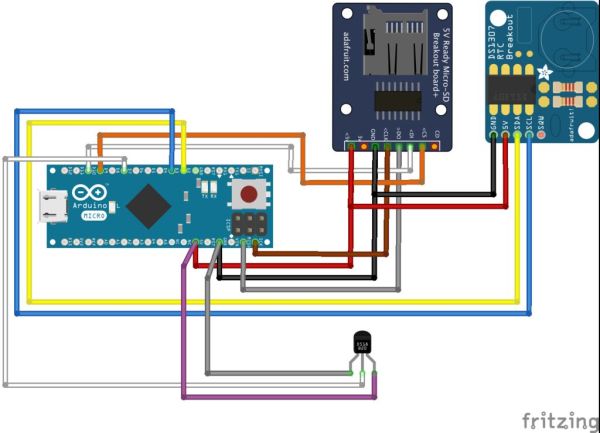I work as a software developer for a biology lab where my day job consists of creating applications to deal with big data visualisation. Recently however one of my colleagues had the need to take regular temperature measurements form a range of jars of liquids over quite an extended period. The commercial available solutions to achieve this are expensive and surprisingly lacking in features. So, as a dedicated hacker and maker, I immediately stepped in an said we could make something better ourselves. So we did. And this is how.
Requirements
- 1 or 2 temperature sensors per data logger
- Temperature range 10-40°C
- Probes should be waterproof and capable of being sterilised with ethanol
- Log temperature every 15 mins
- Operate over a period of 21 days
Step 1: Design
With the stated requirements it was obvious that we could achieve or aims with an Arduino of some description reading data from some digital temperature sensors. A real time clock would be necessary to ensure readings are taken at the required time intervals and an SD card could be used to store the measured in data in a file that could easily be read from a PC or Mac.
After some consideration, googling and searching eBay the following components were selected:
- Arduino Leonardo Pro Micro (clone)
- Maxim IC DS18B20 Digital Temperature Sensor with waterproof enclosure and 1m cable
- Maxim IC DS1307 RTC break out board
- SD Card breakout board
The Leonardo Pro Micro was chosen for its small size and USB interface which eradicates the need for external serial interface and also allows the circuit to be powered via standard mobile phone charger.
The following ancillary parts were also purchased:
- TDK 4GB SD Cards
- Male-to-Female Dupont Cables
- Female-to-Female Dupont Cables
- Plastic food container
Step 2: Schematic & Circuit Construction
The schematic shows how the various components were connected together. All circuit boards had header pins soldered on so connection could be made with Dupont connectors. The temperature probes came with about 1m of cable with bare wires to which I also soldered Dupont connectors. Power for the SD card and RTC was daisy chained from the Arduino board to make connections easier.
For more detail: Quick & Easy Temperature Loggers

